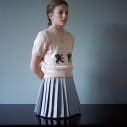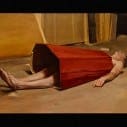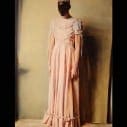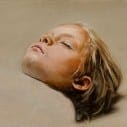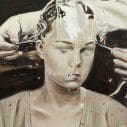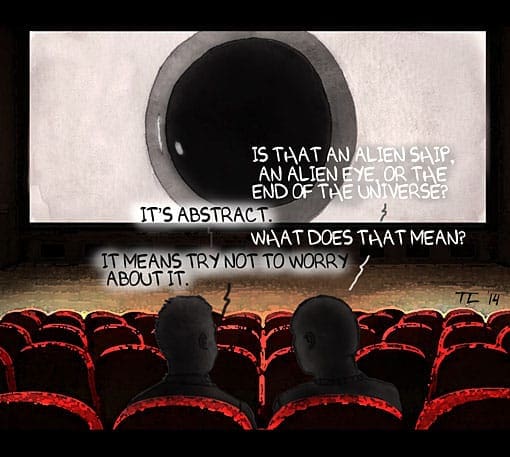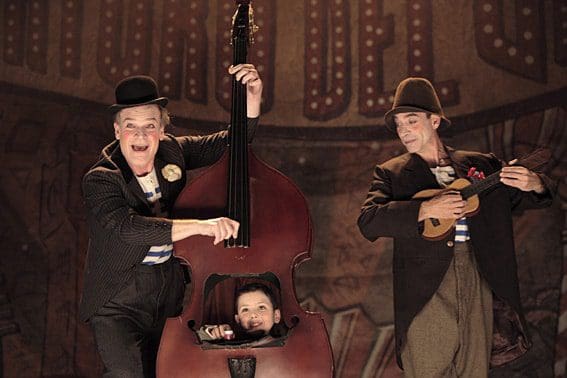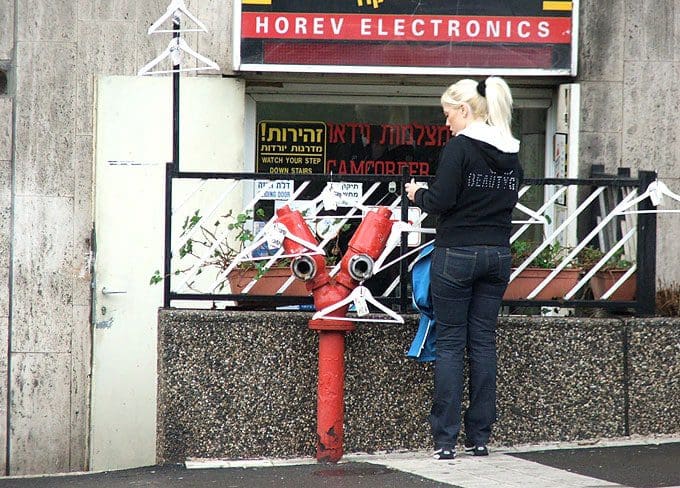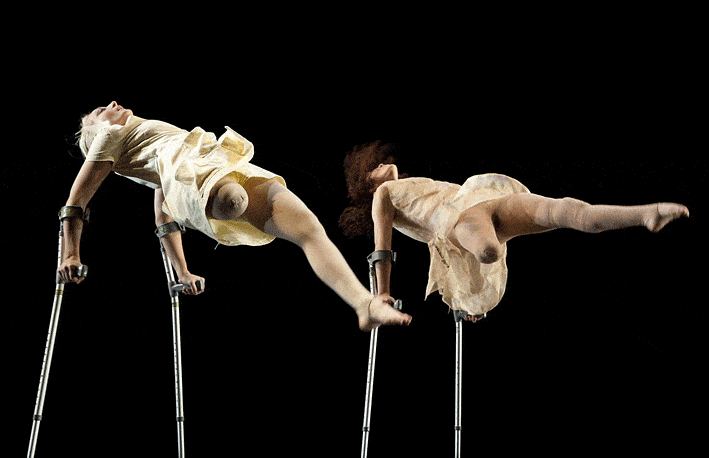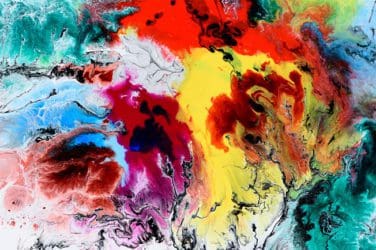The figure of a barefoot man looms over visitors as they enter this major retrospective for Michaël Borremans, one of Belgium’s preeminent contemporary artists – not to mention one of Europe’s foremost living painters – held at Brussels’ principle institution for temporary exhibitions of fine art.
Dressed in clothes of an indeterminable age and grasping a crude cane, the character portrayed in ‘The Avoider’ (2006) is idiomatic of Michaël Borremans’ wider oeuvre: solitary, yet apparently belonging to a rural, pre-modern world; insular, but also palpably conscious of his own skin.
It is the scale of the work, though, at over three metres tall, that declares this is an artist who has reached the height of his profession, a platform that brings with it the large studios and freedom required to produce such work.
‘The Avoider’ stands as an impassive gatekeeper – or else a fellow traveler meeting at a waypoint – to a series of light filled rooms that showcase the oil paintings, of varying sizes, for which Borremans is best known. Largely figurative in its approach, his work is notable for its technical execution, as well as its catalogue of disconcerting themes rendered with a cold beauty. In a contemporary field where such attention to visual effect can often be forgotten, if not willfully rejected, Borremans is a reminder that aesthetically accessible, captivating art continues to be both relevant and rewarding. Putting your talent on the line in this way shows bravery; luckily, Borremans is talented enough for it to pay off. It is only in comparison to the biggest historical names – the likes of Caravaggio, Velasquez or Goya, all of whose influence can be felt in Borremans’ work, or more recently an artist such as Lucien Freud – that his painting can be faulted. The brilliance of those who have gone before, though, should not mean that others cannot attempt to follow. Such comparisons would even be irrelevant, were it not for the fact that a retrospective of this scale invites attempts to place the artist within the pantheon of past greats.
On his own terms, Borremans is a master of ambiguity, presenting us with lifelike figures frozen in uncertain scenarios. The narrative and context is left for the viewer to invent, prompted only by signs that might be misinterpreted. Brooding minimalism would be one way to describe Borremans’ work, another would be to say that it is highly solipsistic. Just as settings and environment are absent or muted, the outward projection of character is similarly restrained. Borremans’ figures are introspective, turned in on themselves, their eyes hidden from view, or their gaze elsewhere, the presence of the viewer irrelevant to their existence. So internal are the subjects’ worlds that even a sense of movement is suspended. “The Wooden Skirt” (2011), a beautifully painted picture of a child standing with her arms outstretched – reminiscent of the work of James Abbott McNeill Whistler in its appearance – is one of the few images to suggest motion and even here it is merely a tentative study of balance.
What Borremans’ subjects seem aware of most, and what we feel through them, is a strong sense of their own bodily presence. The figures hold their bodies in knowing poses, they touch their skin, have their hair pulled taut, or grip objects in their mouths. Simply laid out in blocks of colour, the two most dominant being the woman’s red top and her glowing skin, ‘Anna’ (2003) is a case in point: the eyes almost closed, the hands touching, but also the suggestion that they may have been injured or burned. The focused introspection shown here and in many of Borremans’ other paintings clearly brings with it a large dose of psychology. To add to the mix, the artist’s subtle allusions to sex, vulnerability and violence are amplified by the repeat references to death. What makes the work more interesting and Borremans’ approach more intriguing, though, is the suggestion that these characters inhabit a place that is apparently rural and conservative – perhaps the kind of religious world of the Amish – and that their sensual experiences are somehow at odds with the rules that govern their lives.
While Borremans’ paintings are impressive, a welcome shift takes place, both artistically and curatorial, towards the end of the exhibition. Instead of the bright spaces of the first series of rooms, the lighting is dropped close to darkness and attention is focused on a collection of drawings and collages, smaller in scale yet arguably offering more food for thought. These smaller pieces share the paintings’ quality of being difficult to place temporally, but they divert from the minimalist aesthetic, intricately weaving narrative and visual detail. Works such as ‘The Greatness of our Loss (2006), a combination of pencil, watercolour and acrylic on paper, and ‘The Swimming Pool‘ (2001), simply pencil and watercolour on cardboard, channel literature as diverse as 1984 and Gulliver’s Travels, linked by allusions to the vulnerability of the individual within a system or world that is much bigger than them. While the artist’s paintings become most exciting when he goes large, forcing the presence of an imposing figure on the viewer, the works on paper manage to excite in tiny packages.
Borremans will undoubtedly get most attention for provocative paintings such as ‘The Angel’ (2013), which is used for the exhibition poster and catalogue cover and shows a tall white woman dressed in a classic gown, with her face smeared in black. The clever decision to end this exhibition on a smaller scale, though, reveals an artist with many layers and one who is cable of excelling with more variety than might at first appear.
The exhibition runs until 3rd August, 2014.
The exhibition Michaël Borremans: ‘As Sweet As It Gets’ will later move to the Dallas Museum of Art and the Tel Aviv Museum of Art.
The author travelled to the exhibition as a guest of Eurostar.
Eurostar’s culture offers include 2-4-1 entry into BOZAR. More details on offers at eurostar.com
words Richard Unwin


